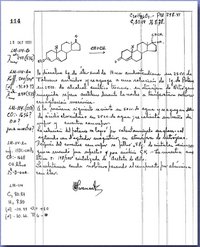von Hertzen H, Piaggio G, Ding J, et al. Low dose mifepristone and two regimens of levonorgestrel for emergency contraception: a WHO multicentre randomized trial. Lancet 2002; 360:1803-1810.
* PRACTICE RECOMMENDATIONS
Single-dose oral levonorgestrel 1.5 mg is as effective as oral mifepristone in preventing pregnancy when given within 120 hours of a single episode of unprotected intercourse. The lower cost, more rapid resumption of menses, increased availability, and ease of administration make oral levonorgestrel the more desirable option.
* BACKGROUND
Oral mifepristone 10 mg and oral levonorgestrel 0.75 mg in 2 doses given 12 hours apart are both effective methods of emergency contraception. No study has compared these 2 regimens or examined the efficacy of single-dose 1.5 mg oral levonorgestrel.
* POPULATION STUDIED
The investigators studied 4136 women enrolled from 15 centers in Europe and Asia. Baseline height, weight, menstrual cycle characteristics, time between ovulation and intercourse, and ethnic background (54% Chinese, 34% White, 12% other Asian or African) were similar in all treatment groups. Mean age was 27 years (range, 14-52 years). History of previous pregnancy, use of emergency contraception, or induced abortion was similar in all groups.
Women included in the study were healthy, had regular 24- to 42-day menstrual cycles, had requested emergency contraception within 120 hours of a single act of unprotected coitus in the present menstrual cycle, were willing to abstain from unprotected intercourse during the remainder of the cycle, had a negative pregnancy test at admission, and were available for follow-up. Women who were recently pregnant or using hormonal contraception were included if they had had at least 1 complete and normal menstrual cycle before the current cycle.
Excluded women were pregnant, breastfeeding, using hormonal contraception or the rhythm method, had uncertain date of last menses, had contraindication to mifepristone, or were likely to continue a pregnancy if emergency contraception failed.
* STUDY DESIGN AND VALIDITY
This is a randomized, double-blinded controlled study in which women were assigned by concealed allocation to receive 10 mg oral mifepristone, 2 doses of 0.75 mg oral levonorgestrel given 12 hours apart, or 1.5 mg oral levonorgestrel. Investigators gave women condoms and advised against unprotected coitus. Women kept diaries recording treatment side effects, spotting or bleeding, intercourse, and use of condoms until menses or the follow-up visit.
Investigators arranged the follow-up visit for 1 week after the estimated onset of next menses. If a woman had normal menses by the follow-up visit, she completed the trial. Participants had a pregnancy test if menses had not occurred or were not normal. A positive pregnancy test was followed by ultrasound examination. If the pregnancy test was negative, participants had a second follow-up appointment. If a woman had no menses by that visit and a repeat pregnancy test was negative, investigators considered treatment successful.
Sixty-one women (1.5%) did not complete the study. Four women (0.1%) had unprotected coitus after the expected date of next menses and were not included in the analysis. Investigators performed an efficacy analysis on the remaining 4071 (98.4%) women. This is a well-designed study with results applicable to Eurasian patient populations and US patients of similar backgrounds.
* OUTCOMES MEASURED
The primary measured outcome was unintended pregnancy. Secondary outcomes included side effects and duration to onset of next menses.
* RESULTS
Pregnancy rates were 1.5% for mifepristone, 1.8% for two-dose levonorgestrel, and 1.5% for single-dose levonorgestrel. One additional pregnancy would have been prevented for every 333 women receiving either mifepristone or a single dose of levonorgestrel instead of 2 doses of levonorgestrel (number needed to treat=333 for each). Prevented fraction and relative risk of pregnancy were not significantly different among the groups.
Side effects of nausea (15%), fatigue, lower abdominal pain, headache, dizziness, breast tenderness, diarrhea, and vomiting (1%) were mild, and similar in all 3 groups. More than half of women started menses within 2 days of the expected date. Early menses were more common with both levonorgestrel groups than mifepristone (31% versus 19%). Overall, 9% of women in the mifepristone group and 5% in the levonorgestrel groups had delay of menses more than 7 days after expected.
Jacob Prunuske, MD, Susan Cochella, MD, and Karen Gunning, PharmD, Department of Family and Preventive Medicine, University of Utah, Salt Lake City. E-mail: jacob.prunuske@hsc.utah.edu.
COPYRIGHT 2003 Dowden Health Media, Inc.
COPYRIGHT 2003 Gale Group



